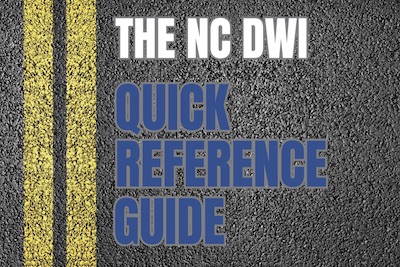HGN Eye Test
 When police officers suspect that a person has been driving while intoxicated, they sometimes ask the driver to step out of the vehicle and submit to standerdized field sobriety testing. While there are many tests conducted by officers, only three have been standardized by the National Highway Traffic Safety Administration (NHTSA). One of them is the Horizontal Gaze Nystagmus test (HGN). If you were given this test, you should immediately contact DWI defense attorney Bill Powers of the Law Offices of Powers Law Firm. This field sobriety test is not always 100% accurate. There may be ways to refute the accuracy and proper administration of the HGN in court.
When police officers suspect that a person has been driving while intoxicated, they sometimes ask the driver to step out of the vehicle and submit to standerdized field sobriety testing. While there are many tests conducted by officers, only three have been standardized by the National Highway Traffic Safety Administration (NHTSA). One of them is the Horizontal Gaze Nystagmus test (HGN). If you were given this test, you should immediately contact DWI defense attorney Bill Powers of the Law Offices of Powers Law Firm. This field sobriety test is not always 100% accurate. There may be ways to refute the accuracy and proper administration of the HGN in court.
Nystagmus is a medical condition wherein involuntary jerking of your eyes. Alcohol consumption can be a cause of nystagmus but millions of people actually suffer from a natural nystagmus, which is why this test is not without its flaws. Nystagmus can also occur when you look to one side as far as possible. That is especially true if the officer requires you to look to the corners for an extended period of time. After a while your eye muscles can become tired. If improperly administered, the HGN test has little or no value in determining the existence of alcohol impairment. The reason police officers use this as a field sobriety test is because alcohol can make nystagmus occur before your eyes reach a high peripheral angle and it can make nystagmus appear more pronounced. Again, the test must be performed carefully and consistent with proper test protocols. If rushed, the officer can easily cause jerking of the eye movements and otherwise misinterpret the results as a nystagmus due to impairment.
What Happens During the HGN?The police officer will have you follow a stimulus like a pen with your eyes (keeping your head still). The object that you are following with your eyes must be at a comfortable distance for you to see it, which is normally around 12-15 inches from the bridge of your nose. If you have glasses you should be allowed to leave them on if you can’t see the stimulus without correcting your vision. When administering the test, the officer should make sure that as you’re taking the test your eyes won’t be distracted by moving traffic or by the lights on the officer’s vehicle. This can negatively affect your test results. If you have a glass eye, wear a patch or have vision in only one eye, the HGN test has little or no level of reliability. The officer can’t assume that both of your eyes will perform in the same way.
SFST Steps and Measurements
Horizontal Gaze Nystagums- Remove eyeglasses
- Check pupils for equal size. If the two pupils are distinctly different in size it is possible the subject has a glass eye or some neurological disorder or head injury
- Check eyes to insure they both track stimulus equally. If the eyes do not track together, the possibility of serious medical condition or injury may be present. NHTSA “Testing for HGN in a subject with an eye disorder or artificial eye has not been validated by research.”
- Begin with Left Eye
- Check each eye independently
- Hold stimulus 12 to 15 inches in front of nose
- Check for a “lack of smooth pursuit” – Center to side in two (2) seconds
- Check both eyes twice to confirm observations
- Check for “distinct nystagmus at maximum deviation” – Hold at Maximum Deviation for “minimum” four (4) seconds each time, nystagmus must be Distinct and Sustained.
- Check both eyes twice to confirm observations
- Check for “onset of nystagmus prior to 45 degrees” – The stimulus should be moved from 0 to 45 degrees at a pace taking four (4) seconds
- Check both eyes twice to confirm observations
- Position Stimulus 12 – 15 inches from nose
- Raise stimulus until the subject's eyes are elevated as far as possible
- Hold for approximately four (4) seconds
There are many defenses to the HGN test, so don't plead guilty based on that alone. Contact attorney Bill Powers first.
704-342-4357
 Powers Law Firm PA Home
Powers Law Firm PA Home



















